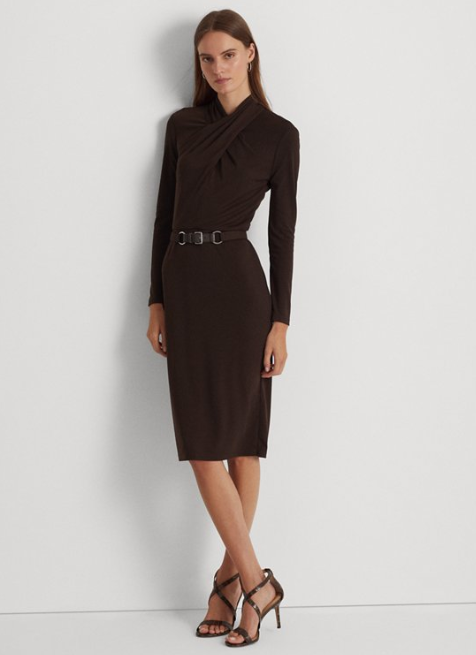Are you tired of rummaging through your closet, only to find that your favorite outfit just doesn’t fit as snugly as it used to? Or perhaps you’ve stumbled upon that dream dress on a thrift store rack, but it’s a size too big? Fret not, fashion enthusiast! In this article, we’re diving headfirst into the world of DIY fashion clothing tips, focusing on the art of tailoring for that perfect fit. Say goodbye to ill-fitting attire, and get ready to unleash your inner fashion designer. Whether you’re a seasoned seamstress or a sewing novice, we’ve got you covered. Let’s get started!
The Basics of Tailoring
Before we jump into the nitty-gritty of DIY tailoring, let’s ensure we’re on the same page about what tailoring actually means. Tailoring is the process of altering clothing to fit your body like a glove. It’s not just about making clothes smaller; it’s about enhancing the overall look and comfort of your garments. Here are some fundamental aspects to consider:
Understanding Fabric
When it comes to tailoring, the type of fabric plays a crucial role. Different materials behave differently, so it’s essential to choose the right fabric for your project.
The Tools of the Trade
Every DIY fashionista needs a set of essential tools to get started. Here’s a checklist to ensure you’re well-equipped:
- Sewing machine (or needle and thread if you prefer hand-sewing)
- Measuring tape
- Pins and needles
- Fabric scissors
- Chalk or fabric marker
- Iron and ironing board
Perfecting Your Stitch
A solid understanding of various stitching techniques is essential for tailoring success. From simple hemming to more complex alterations, your stitching skills will make all the difference.
Now that we’ve covered the basics, let’s move on to some practical DIY fashion clothing tips to help you tailor your outfits like a pro!
DIY Fashion Clothing Tips: Tailoring for a Perfect Fit
Hemming Your Pants Like a Pro
Have you ever bought a pair of pants that were the perfect length but a tad too wide at the legs? Or perhaps you’ve lost weight, and your favorite jeans are now too long. Hemming your pants is an excellent place to start your DIY tailoring journey.
Materials You’ll Need:
- Measuring tape
- Pins
- Sewing machine or needle and thread
- Iron and ironing board
Steps to Follow:
- Put on the pants and fold the excess fabric up to your desired length.
- Use pins to secure the fold in place.
- Take off the pants and measure the distance from the fold to the bottom of the pant leg. Ensure that this measurement is consistent on both legs.
- Iron the fold flat.
- Stitch along the fold line, removing the pins as you go.
- Trim any excess fabric, leaving a small seam allowance.
- Iron the hem once more for a polished look.
Taking in a Loose Blouse
Have you ever fallen in love with a blouse only to find that it hangs on you like a potato sack? Fear not; you can easily take in a loose blouse to give it a more tailored appearance.
Materials You’ll Need:
- Sewing machine or needle and thread
- Pins
- Measuring tape
- Chalk or fabric marker
- Iron and ironing board
Steps to Follow:
- Put on the blouse inside-out.
- Pinch the excess fabric on either side of the blouse to create a flattering fit.
- Use the chalk or fabric marker to mark the new seam lines.
- Take off the blouse and lay it flat.
- Sew along the marked lines, removing the pins as you go.
- Trim any excess fabric, leaving a small seam allowance.
- Turn the blouse right side out and iron for a smooth finish.
Resizing a Baggy T-shirt
Baggy T-shirts are comfy, but they don’t always make the fashion statement you want. Let’s transform that oversized tee into a stylish, well-fitting garment.
Materials You’ll Need:
- Sewing machine or needle and thread
- Pins
- Measuring tape
- Chalk or fabric marker
- Iron and ironing board
Steps to Follow:
- Put on the T-shirt inside-out.
- Pinch the excess fabric on both sides of the shirt for a better fit.
- Use the chalk or fabric marker to mark the new seam lines.
- Take off the T-shirt and lay it flat.
- Sew along the marked lines, removing the pins as you go.
- Trim any excess fabric, leaving a small seam allowance.
- Turn the T-shirt right side out and iron for a sleek look.
Reviving an Ill-Fitting Dress
Have you ever come across a vintage dress that’s too big in all the wrong places? Vintage finds are treasures, but they often require a bit of tailoring magic to fit perfectly.
Materials You’ll Need:
- Sewing machine or needle and thread
- Pins
- Measuring tape
- Chalk or fabric marker
- Iron and ironing board
Steps to Follow:
- Put on the dress inside-out.
- Pinch the excess fabric at the waist, bust, or wherever adjustments are needed.
- Use the chalk or fabric marker to mark the new seam lines.
- Take off the dress and lay it flat.
- Sew along the marked lines, removing the pins as you go.
- Trim any excess fabric, leaving a small seam allowance.
- Turn the dress right side out and iron for a polished finish.
Your Tailoring Troubleshooters
Can I tailor clothes without a sewing machine?
A1: Absolutely! While a sewing machine can speed up the process, many alterations can be done by hand with a needle and thread.
What if I make a mistake while tailoring?
A2: Don’t panic! Seam rippers are your best friend when it comes to undoing stitches. Take your time, and you can fix most mistakes.
How do I find the right fabric for my DIY projects?
A3: Consider the type of clothing you’re altering and its intended use. For beginners, natural fibers like cotton and linen are often easier to work with.
Can I tailor clothes with no prior sewing experience?
A4: Absolutely! Start with simple alterations like hemming, and as you gain confidence, you can tackle more complex projects.
Conclusion: Tailored to Perfection
There you have it, fashion-forward folks – a crash course in DIY fashion clothing tips, all about tailoring for a perfect fit! With these techniques under your belt, you can confidently tackle ill-fitting garments and transform them into stylish wardrobe staples. Remember, practice makes perfect, so don’t be discouraged if your first attempt isn’t runway-ready. Keep honing your tailoring skills, and soon you’ll be the envy of your fashion-savvy friends. Happy tailoring!



